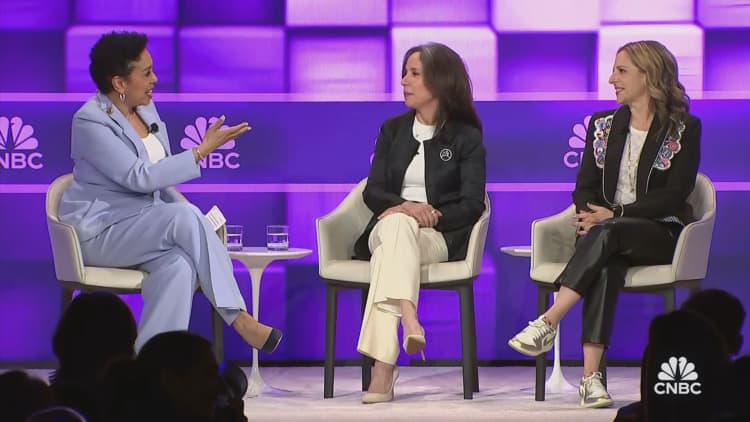monkeybusinessimages | Getty
Most U.S. homebuyers taking out a mortgage opt for a 30-year fixed-rate option — but they may not realize how unusual that offering is.
“The 30-year fixed-rate mortgage is a uniquely American construct,” said Greg McBride, chief financial analyst for Bankrate.
True to its name, a 30-year fixed-rate mortgage spreads out repayment over 30 years, with an interest rate that remains the same for the life of the loan.
As long as you do not refinance or sell your house, the rate you get at the start of your mortgage won’t change: “You’ll have the exact same rate, regardless of what the broader market is doing,” said Jacob Channel, a senior economist at LendingTree.
In 2022, 89% of homebuyers applied for a 30-year mortgage, according to government data analyzed by Homebuyer.com.
More from Personal Finance:
How mortgage rates impacted the spring housing market
Series I bond rate is 4.28% through October 2024
29% of U.S. households have jobs but struggle to cover basic needs
The 30-year fixed is able to exist in the U.S. due to the country’s deep financial markets, experts say.
“If we did not have the dominance of the fixed-rate mortgage in the U.S. residential mortgage market, we would see a much higher level of stress among existing homeowners,” McBride said.
The ‘whole reason’ for the 30-year fixed rate mortgage
The secondary market for mortgage-backed securities in the U.S. is the “whole reason” for the existence of the 30-year fixed-rate mortgage, McBride explained.
About half of all mortgages originated in the U.S. will end up packaged into a mortgage-backed security and sold to bond investors, he said.
While mortgage-backed securities were at the heart of the financial crisis and Great Recession, improvements have been made to avoid the risk: Lenders strengthened mortgage origination processes and improved underwriting standards and collateral assessment, and there are now other guardrails that did not exist over a decade ago.
Mortgage-backed securities are attractive to investors in the U.S. and across the globe because their government sponsorship makes them safe investments over long periods of time and they provide a fixed payout, said Daryl Fairweather, chief economist at Redfin, a real estate brokerage site.
The rate on the 30-year fixed mortgage tracks closely to 10-year Treasuries because “U.S. real estate is almost as good an investment as a U.S. Treasury bond,” she said.

However, mortgage-backed securities are “only part of the story,” said Enrique Martínez García, an economic policy advisor of the Federal Reserve Bank of Dallas.
“There are two institutions in the U.S. mortgage market that are very specific to the U.S.: Fannie Mae and Freddie Mac,” Martínez García said.
The insurance Fannie and Freddie provide is essential to why lenders are willing to take on the risk associated with interest rate movements, Martínez García explained.
“In most other countries, [that risk] gets passed through to the households, the buyers,” he said.
Even in countries where fixed-rate mortgages are prevalent, they usually span shorter periods of time because such countries lack both the path towards securitization and institutions that take on the long-term risk, Martínez García said.
“That’s what’s missing in many other countries,” he said.
Foreign homebuyers typically get variable rates
While homebuyers in other countries can typically get long-term mortgages or fixed-rate loans, the U.S. is unusual in its combination of those attributes.
In Canada, for example, homeowners might get a mortgage that spans 25 years, but they are expected to refinance every five years or so, Channel said.
In the U.K., homeowners might get fixed-rate mortgages, but such loans only span up to five years.
“Every few years, you’re nonetheless doing something that causes your rate to change,” Channel said.
The difference between fixed and variable mortgage rates lies in who bears the risk of fluctuating rates, Martínez García said. With fixed-rate loans, financial institutions bear the risk. With variable-rate loans, consumers do.
